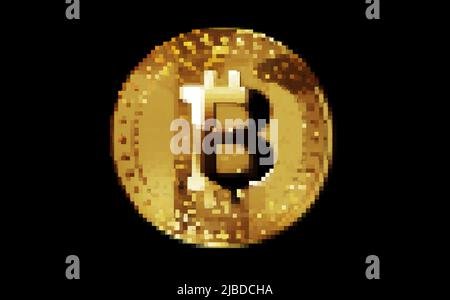Cryptocurrencies have taken the financial world by storm, with Bitcoin leading the charge as the pioneering digital currency. Aspiring investors and enthusiasts can find a wealth of information on https://robbo-ai.org/, enhancing their knowledge of this evolving market. However, Bitcoin is just the tip of the iceberg in the complex and diverse world of cryptocurrencies. In this article, we’ll delve deep into the altcoin ecosystem to explore their narratives, market dynamics, technological innovations, and potential impact on the future of finance.
The Emergence of Altcoins
Historical Context
Bitcoin, created by the pseudonymous Satoshi Nakamoto in 2009, was the world’s first cryptocurrency. Its release marked a significant milestone in digital finance.
The Need for Alternatives
While Bitcoin solved the problem of trust in online transactions, various developers saw the potential for improvement. Altcoins emerged as alternatives, aiming to address Bitcoin’s limitations or explore new use cases.
Early Altcoins
Altcoins like Litecoin (2011) and Namecoin (2011) were among the first to gain traction. Litecoin aimed to offer faster transaction times, while Namecoin ventured into decentralized domain registration.
The Diverse Altcoin Landscape
Categorizing Altcoins
Altcoins come in various forms, including tokens built on existing blockchains (Ethereum-based tokens), forks of Bitcoin (e.g., Bitcoin Cash), and unique blockchains (e.g., Ripple). Each category serves different purposes.
Notable Altcoins
Ethereum introduced smart contracts and decentralized applications (DApps). Ripple focuses on facilitating cross-border payments. Cardano emphasizes academic rigor in its development, and Polkadot pioneers interoperability.
Consensus Algorithms
Altcoins employ different consensus mechanisms like Proof of Stake (PoS), Delegated Proof of Stake (DPoS), and Proof of Authority (PoA) to secure their networks and validate transactions.
Altcoin Market Dynamics
Altcoin Market Capitalization
Bitcoin’s dominance in the market is often measured by its percentage share of the total cryptocurrency market capitalization. Altcoins collectively account for the remaining share.
Price Movements
Altcoin prices are influenced by a myriad of factors, including news, market sentiment, adoption, and technological developments. Understanding these factors is crucial for investors.
Trading and Investing Strategies
Altcoin trading requires a different set of strategies than Bitcoin. Traders often consider factors like liquidity, volatility, and project fundamentals when making investment decisions.
The Power of Altcoin Communities
Community Development
Altcoins thrive in active and engaged communities. Developers, enthusiasts, and users collaborate to enhance the technology, create awareness, and drive adoption.
Case Studies
Projects like Ethereum, which launched with a successful initial coin offering (ICO), and Cardano, which fosters academic partnerships, highlight the power of strong communities in shaping narratives.
Governance
Altcoin communities often face important decisions about network upgrades, token economics, and development priorities. Governance mechanisms vary from project to project.
Altcoins and Technological Innovations
Beyond Bitcoin
Altcoins are not merely copycats of Bitcoin. They explore new frontiers, including smart contracts, DApps, decentralized finance (DeFi), and non-fungible tokens (NFTs).
Smart Contracts and DApps
Ethereum significantly transformed the cryptocurrency landscape with the introduction of smart contracts. These innovative contracts, which execute automatically based on predefined conditions, facilitate complex transactions directly between parties, eliminating the need for intermediaries. This advancement not only streamlined transactions but also opened up new possibilities for decentralized applications and systems, marking a major leap in blockchain technology.
Interoperability
Projects like Polkadot aim to solve the issue of blockchain interoperability, allowing different chains to communicate and share data, further expanding the utility of cryptocurrencies.
Altcoins and the Future of Finance
DeFi Revolution
Decentralized finance (DeFi) is a rapidly growing sector within the altcoin ecosystem. It leverages blockchain technology to create financial services that are accessible to anyone with an internet connection.
Financial Inclusion
Altcoins have the potential to bring financial services to unbanked and underbanked populations worldwide, providing them with access to savings, loans, and investment opportunities.
Regulatory Challenges
As altcoins gain prominence, regulatory scrutiny increases. Governments are grappling with how to regulate and tax these new digital assets, impacting the future landscape.
Conclusion
In piecing together the altcoin narratives, we’ve explored the evolution of cryptocurrencies beyond Bitcoin. The diverse altcoin landscape, market dynamics, strong communities, technological innovations, and the potential for reshaping finance highlight the significance of understanding these digital assets. As the cryptocurrency mosaic continues to evolve, Bitcoin remains a central piece, but altcoins add layers of complexity, innovation, and opportunity to this ever-changing landscape.


